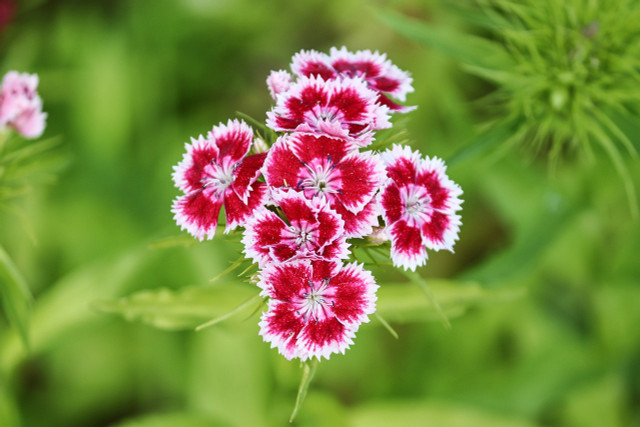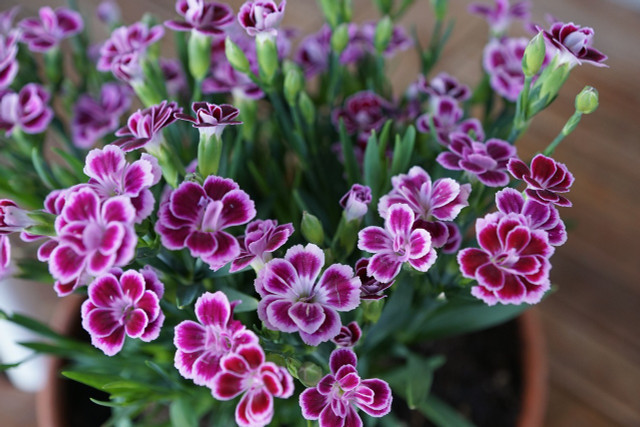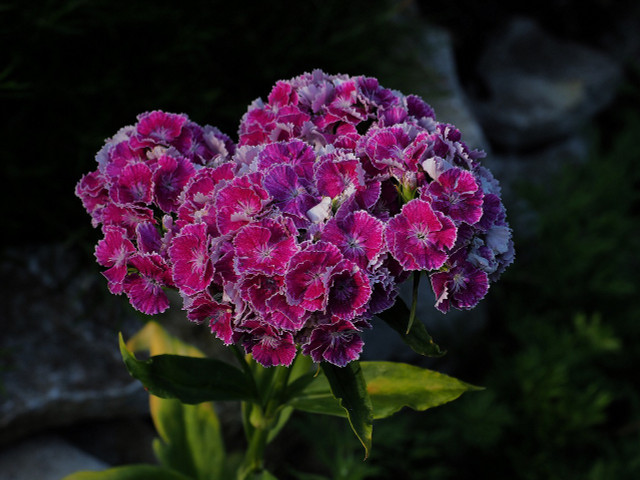
The bearded carnation originally grows in the mountains of southern Europe. However, it has long since made its way into our domestic gardens. We will show you how to grow and care for the flowers properly.
The bearded carnation with its colorful flowers beautifies any garden, no matter how small. Especially if you are planning a cottage garden, this plant should not be missing. With a few tips, you can ensure that the bearded carnation also grows and thrives in your garden.
Contents
Grow bearded carnations: Seeds or seedlings?

You can buy bearded carnations as young plants or seeds in the hardware store. From the seeds of bearded carnations you can grow your own plants relatively quickly. This variant is therefore also the easiest.
This is what you should keep in mind when growing bearded carnations from seed:
- The right time to sow the seeds is from April to July. Hardy bearded carnations do well with spring temperatures.
- The right soil: Bearded carnations like well-drained and alkaline soil. It’s best to add some compost to your soil so the plants get enough nutrients.
- The right sowing: Scatter the seeds on the prepared soil and cover them only lightly with soil. Especially at the beginning of the germination period, it is important to keep the soil slightly moist.
- Be patient: The sown bearded carnations need some time to develop and usually bloom only in the second year.
- It is best to plant young plants in October so that they can bloom the following spring.
The right location for the bearded carnation

In order for your bearded carnation to sprout lots of flowers, you need to find a suitable location for it.
- Plenty of sun: Bearded carnations like it full sun and warm. Therefore, make sure that you do not plant them near tall plants and trees that cast a lot of shade.
- Plenty of humus: Where the soil contains plenty of humus and lime, your bearded carnation will feel particularly comfortable. It is best to mix some of this into the soil when sowing.
- Good air circulation: Do not plant the bearded carnations too densely. It is important for the flower formation that the air can circulate well.
Bearded carnation: care and fertilizing

To keep bearded carnation thriving in your garden for as long as possible, heed the following tips:
- Watering: The bearded carnation is very robust and will rarely get yellow leaves. Nevertheless, you should water it regularly, especially during long periods of heat. However, be careful not to create waterlogging, as this can quickly cause the roots of the bearded carnation to rot.
- Fertilize: To keep your bearded carnations blooming as profusely as possible, you can fertilize them twice a year (preferably in spring and late fall). Use natural materials such as compost, coffee grounds or autumn leaves. Just don’t overdo it here, because too much fertilizer can harm the bearded carnations.
- Propagation: As a rule, the bearded carnation sows itself. Of course, you can also propagate the plants by cutting off some of the dried flowers after the flowering period and collecting the seeds they contain. Next spring you can sow the seeds again.
- Diseases and pests: You can avoid most diseases, such as carnation rust, by planting bearded carnations in well-drained soil and avoiding waterlogging. Unfortunately, the plants are not immune to aphids and spider mites.
Cut bearded carnations

You can encourage bearded carnations to bloom a second time by pruning them. To do this, cut back the plants of the first flowering period. In autumn, however, you do not need to prune the bearded carnation.
The bearded carnation is also a very popular cut flower. Even when dried, the flowers still look very beautiful. With these tips you can enjoy the flowers in the vase for a long time:
Cut the bearded carnations best in the early morning. Make sure that the dew has dried beforehand.
Your pruning shears should always be nice and sharp and clean so that you don’t damage the stems of the plants.
To prolong the life of your bouquet, you should re-cut the stems every two days. It is also a good idea to change the flower water directly.


